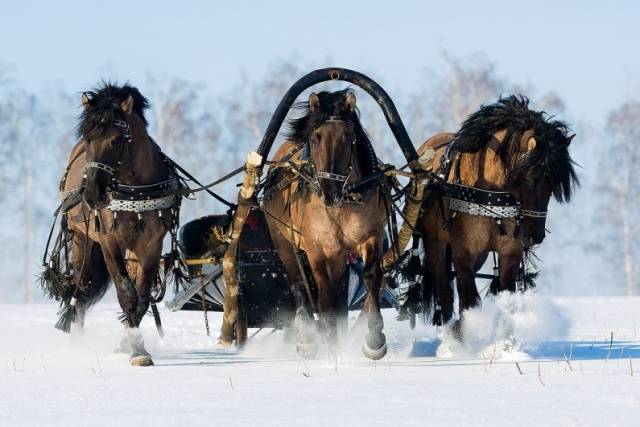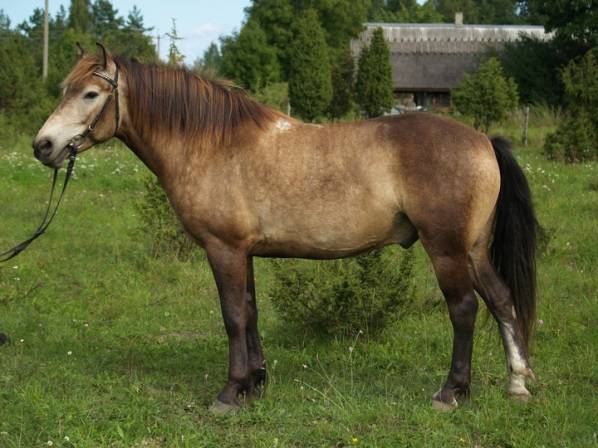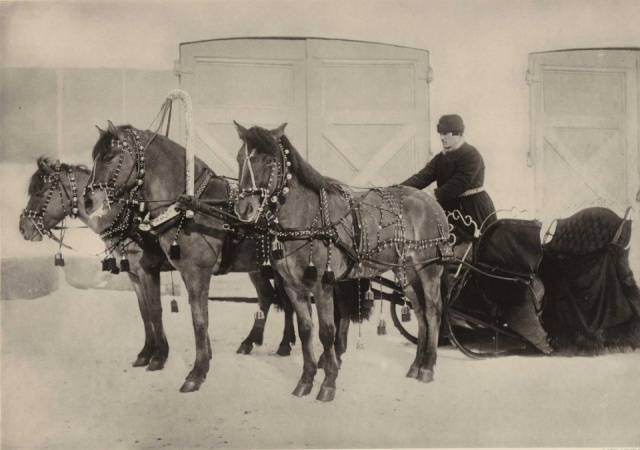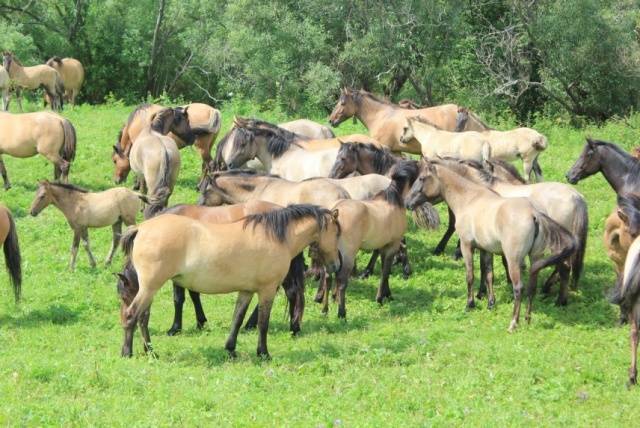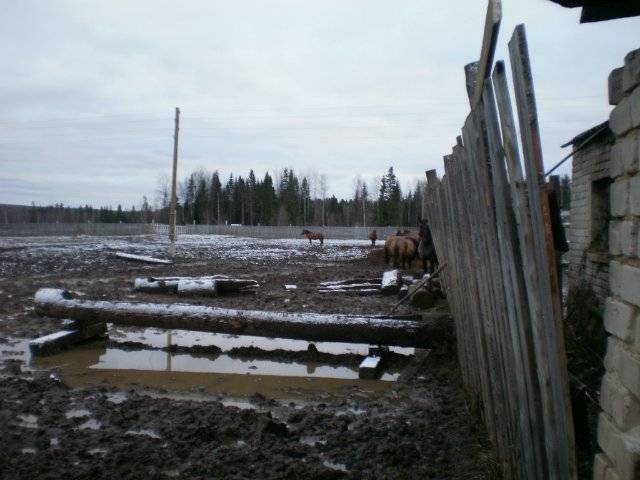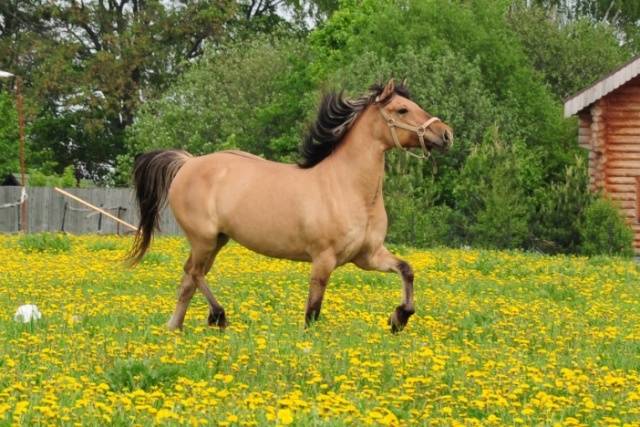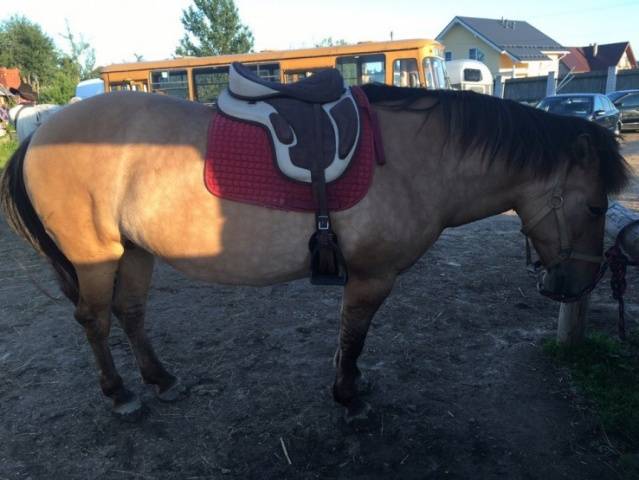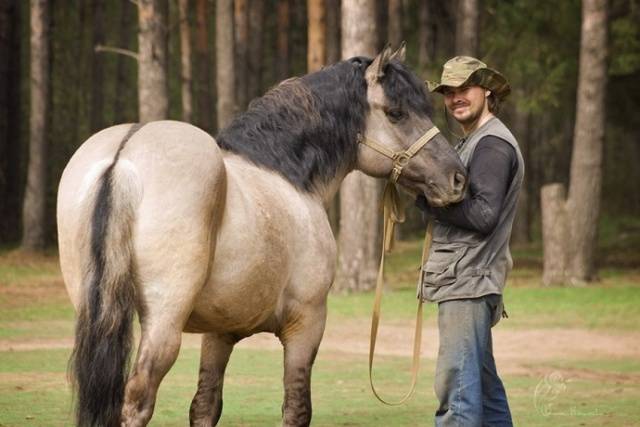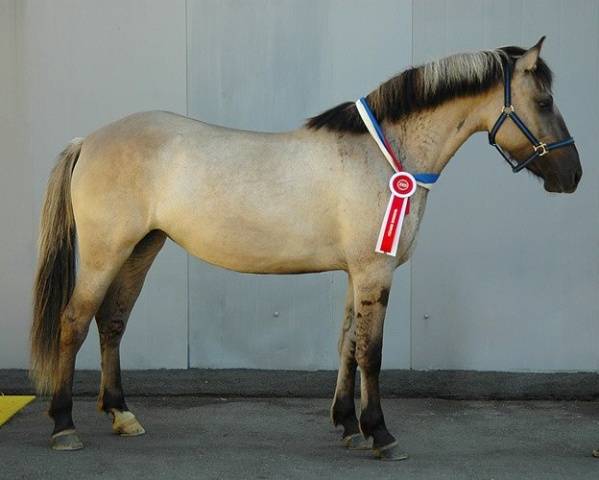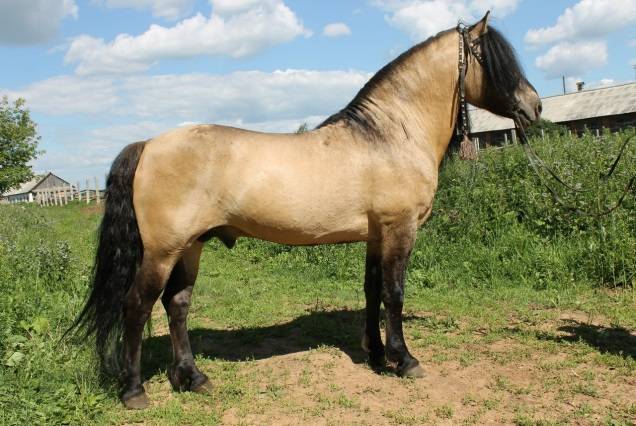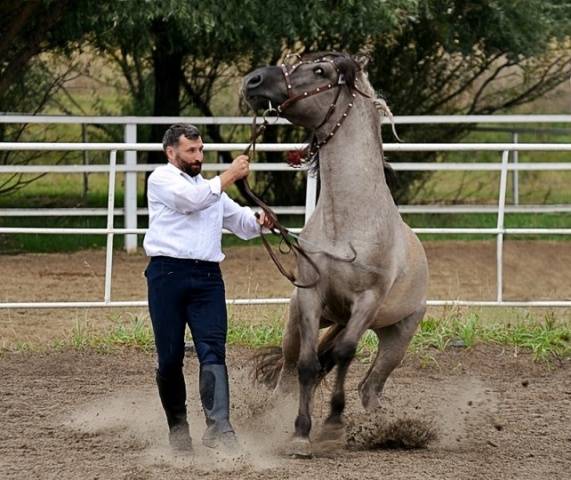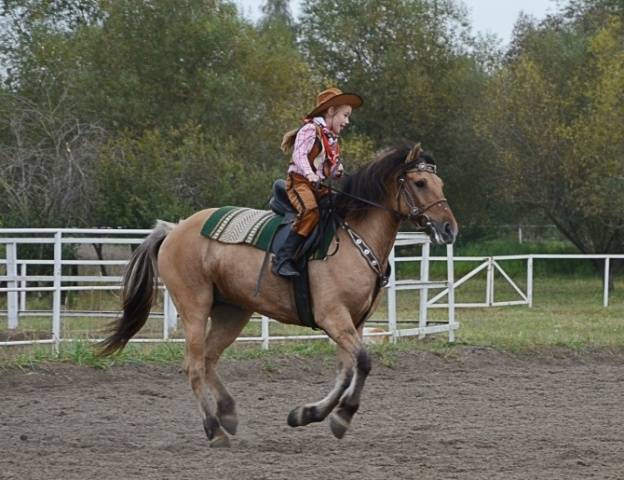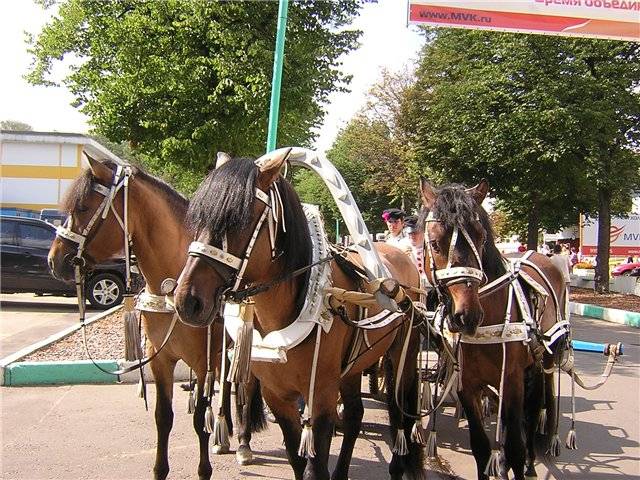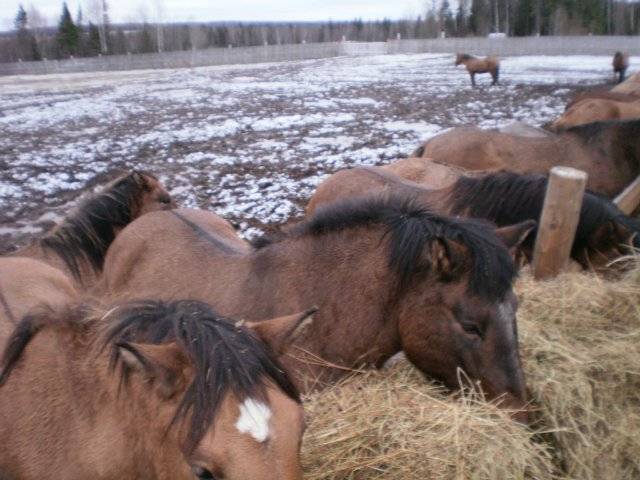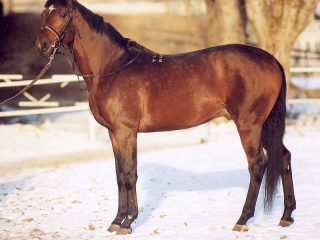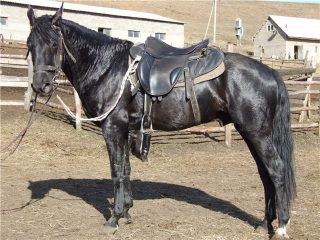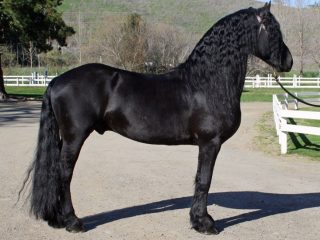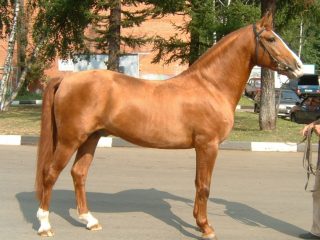Content
The Vyatka horse breed formed as a homogeneous massif by the end of the 17th - beginning of the 18th century. This is a northern forest breed with all the characteristics associated with this group of horses. Udmurtia is considered the historical homeland of the Vyatka horse, where the main livestock of this breed is concentrated today.
History of the breed
It was officially believed that the history of the breed began either at the end of the 14th century, when colonists from Veliky Novgorod moved to the interfluve between Vyatka and Obvyu, or around 1720, when, by order of Peter the Great, the Stroganov brothers improved the local livestock with horses imported from the Baltic states.
Previously it was believed that the formation of the Vyatka horse was greatly influenced by the “Livonian Kleppers”, today known as the Estonian Kleppers.
It is not known for certain whether the colonists actually brought them with them, but it is documented that, by order of Peter the Great, several heads of Estonian kleppers were actually delivered to Udmurtia to improve the local livestock.
Modern research has shown that Novgorod settlers were unlikely to drag horses of a foreign breed with them, making do with less exotic draft power.And several heads of “Stroganov” kleppers “dissolved” in the general horse mass of Udmurtia, without having a big impact on the local aboriginal breed.
The Vyatka horse was bred by folk selection from the northern forest stock that lived in this territory before the arrival of settlers there. It could have been influenced by native breeds of Central Asia, which are related to the Yakut horse. Western European and Eastern breeds did not participate in the formation of Vyatka.
Flood meadows in the floodplains of Vyatka and Obvi made it possible to create, through folk selection, an excellent draft horse, famous for its endurance, good manners and energy. Vyatkas are perfectly adapted to work in agriculture and forestry. Before the appearance of the Oryol trotter, courier troikas pulled by horses of the Vyatka breed scurried along the roads of the Russian Empire. Representatives of the aristocracy did not hesitate to keep these small horses at that time.
Troika Vyatok, which belonged to the adjutant of the Guards Corps, Captain Kotlyarevsky.
After the appearance of the Orlovtsy, the need for small, hardy and nimble horses decreased significantly, and Vyatka experienced its first crisis at the beginning of the 19th century, when it began to be uncontrollably “cultivated” by heavy breeds. Ordinary peasants mixed the breed on their farmsteads. As a result, the Vyatka breed practically disappeared. It is known that in 1890, three Vyatka horses could not be found in all of Russia for Emperor Alexander III. And in 1892, the almost complete disappearance of the Vyatka breed was officially recognized.But an expedition organized in 1900 revealed the presence of a significant population of Vyatka horses in Udmurtia. This is where the work with the breed ended.
Renaissance
In 1918, experts were able to find only 12 heads that matched the description of the Vyatka horse breed. The horses were presented at the All-Russian Working Horse Exhibition and attracted a lot of interest from visitors. And that’s where it all ended too.
The breed remained in oblivion for a long time. Only from the late 30s did targeted work begin with the breed. But breeding nurseries were organized only in 1943-1945. During the period of the breeding nurseries' activity, the breed standard was fixed and regional breeding books were established. The number of Vyatka horses began to “come to a common denominator.” Compared to the beginning of the breeding nursery activity (and before that only 12 heads were discovered), the number of the breed has increased significantly and totaled 1100 heads.
In fact, this is enough to prevent the breed from becoming extinct, but not enough for the full development of the population.
Second crisis
In connection with the course of the CPSU towards the mechanization of agriculture, which began in the late 50s - early 60s, a reduction in numbers affected not only the Vyatka breed. Horses, as a relic of the past, began to be handed over to meat processing plants everywhere. State breeding nurseries were closed and breeding work ceased. This policy of the authorities hit Vyatki very hard, since many pedigree horses were sold for meat and horse farms engaged in breeding were closed. It was planned to improve the pitiful remains of the breed with the help of Russian heavy trucks, Orlovtsev and Russian trotters. As a result, all the efforts of specialists to preserve and improve the breed were reduced to zero.
In the mid-70s, the authorities realized that such measures had significantly depleted the gene pool of aboriginal breeds in the USSR. As a result of several expeditions to survey the livestock, carried out in the early 80s, breeding nests of Vyatka horses were discovered in several individual farms. But the proposal to restore the breed based on these families again did not find understanding in the Ministries. Fortunately, Udmurtia horse breeders have become interested in preserving and restoring the breed.
In the republic, 6 breeding farms for breeding the Vyatka horse were organized. Since the 90s, tests and exhibitions of Vyatok have been held at the Izhevsk Hippodrome. A program for the development and conservation of the breed has been developed. The breed is registered with VNIIK and systematic breeding work is being carried out with it. Today the Vyatka horse is no longer in danger.
Description
Even from a non-exterior photo of the Vyatka horse, one can see that the breed has a pronounced draft type with low withers and an elongated body. They have strong bones and dense, strong muscles.
There are two types of Vyatok: Udmurt and Kirov, with some differences between them. As a result of selection, the differences begin to smooth out and today you need to look at a specific horse.
Usually Vyatka has a medium-sized head. The Udmurt type has a neater head, but the Kirov type has a better structure of the body and limbs. But as a result of work, the heads of the Kirov Vyatki, bred in the Gordino agricultural company, became more refined, not as rough as before.For this reason, the modern standard for describing the head of a Vyatka horse specifies that it should have a wide forehead and a straight profile. Sometimes the profile can be slightly concave, which makes Vyatka look like an Arabized horse.
The neck is short and powerful. Output is low. Stallions often have a well-defined crest.
A clogged comb means obesity, to which the Vyatka horse is prone, like any native breed.
The withers are weakly defined, of the harness type. The topline is level. The back is long and wide. The loin is long, especially in mares. The chest is deep and wide. The croup is rounded and slightly sloping.
Limbs are short. The hind legs are prone to sabering, which is a fault. The hooves are small, with a very strong horn. Vyatok's skin is thick, with thick outer hair.
Previously, the height at the withers of the Vyatka breed of horses was 135-140 cm. Today, the average height of the Vyatka is 150 cm. It is believed that the increase in height occurred as a result of crossbreeding with larger breeds. But in the 90s, Vyatki also did not differ in serious size and was about 140-145 cm. Today, specimens with a height of 160 cm are often encountered. Therefore, most likely, the increase in height was influenced by an improvement in the diet of queens and foals.
For this reason, it is likely that in fact some large extinct breed of horse took part in the formation of the Vyatka horse.
Suits
Previously, the Vyatka horse could be found in almost any color.Today, only Savras color is cultivated in the breed. Savrasity manifests itself in almost any main suit and Vyatka can be bay-savras, dun-savras, red-savras or raven-savras. The most desirable colors today are considered to be bulano-savrasaya and raven-savrasaya (mousy) colors. The main suits are also present in the population, but when grading, the grades for them are reduced.
Quite a lot of red individuals are born, but red and brown (red-savras) Vyatok are discarded from breeding.
Signs of Savras suit
It is quite difficult for the uninitiated to understand what is the difference between one suit and another. But the main feature of a Savras horse is the strap on the back and the zebra-like shape on the legs.
In the photo of a mousey horse of the Vyatka breed, the strap along the spine and the zebroid stripes above the carpal joint are clearly visible.
Sometimes a light-mousy horse can be confused with a dun, but usually in this case the color is given away by the head: a mousey horse has a lot of black on its head. And a bay with a Savraso-bay of bright color.
A belt is a strip that runs along the horse's spine. It differs from zonal darkening by clearly defined boundaries.
In addition to these mandatory signs, a Savras horse may also have “frost” in the mane and tail: lighter hair. Sometimes there is so much of this blond hair that the mane appears off-white.
Markings
In the Vyatka breed, white markings lead to rejection from the production stock or a reduction in the assessment during grading. Therefore, Vyatka cannot have large marks.A small star or small white mark on the lower part of the leg is possible, but not desirable.
Pronounced zebroid stripes on the legs and “wings” on the shoulders, as in the photo below, are welcome.
Character traits
Being an indigenous breed, the Vyatka was bred not as a productive animal for meat and milk, but as a draft force on the farm. Therefore, the character of the Vyatka breed horses is softer and less stubborn than that of a significant part of other original representatives of the horse world. Although, as everywhere else, there are also evil specimens. Or those who are not averse to testing a person’s strength.
On the other hand, in Udmurtia, many KSKs use Vyatok to educate children. Like children's horses, Vyatkas today have a serious disadvantage - increased growth. A horse over 155 cm at the withers is not very suitable for training children.
Vyatkas jump well for their build and can compete in children's dressage competitions. Thanks to their very stable psyche, they can be used for holiday skating.
Reviews
Conclusion
The Vyatka horse copes well with housework in a personal yard. Its advantages are not only endurance and cost-effectiveness of maintenance, but also the ability to quickly select a suitable harness. It is much easier to find a collar and harness on Vyatka than on a large heavy truck.
